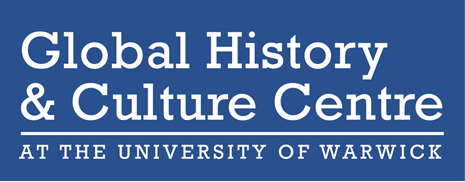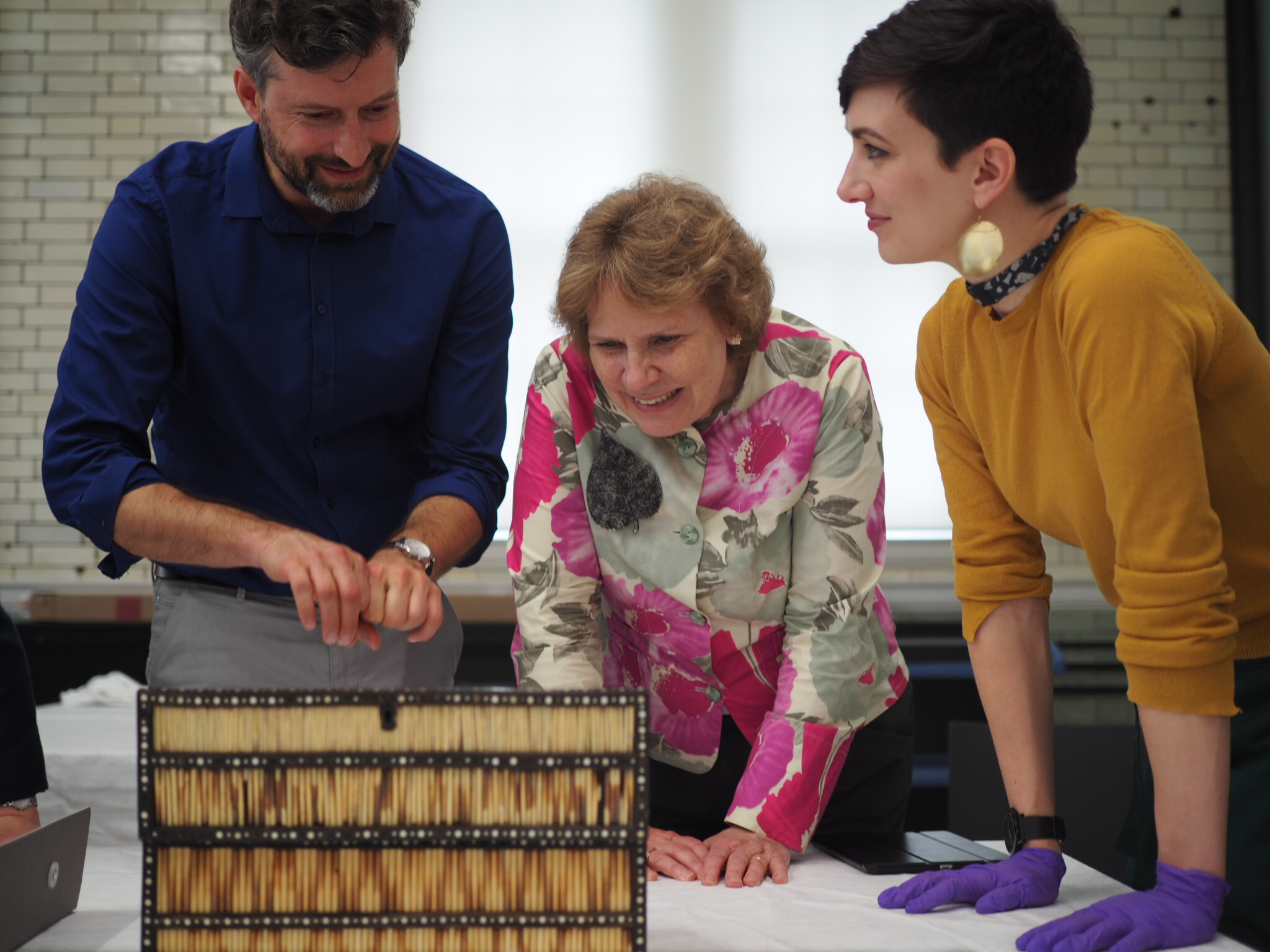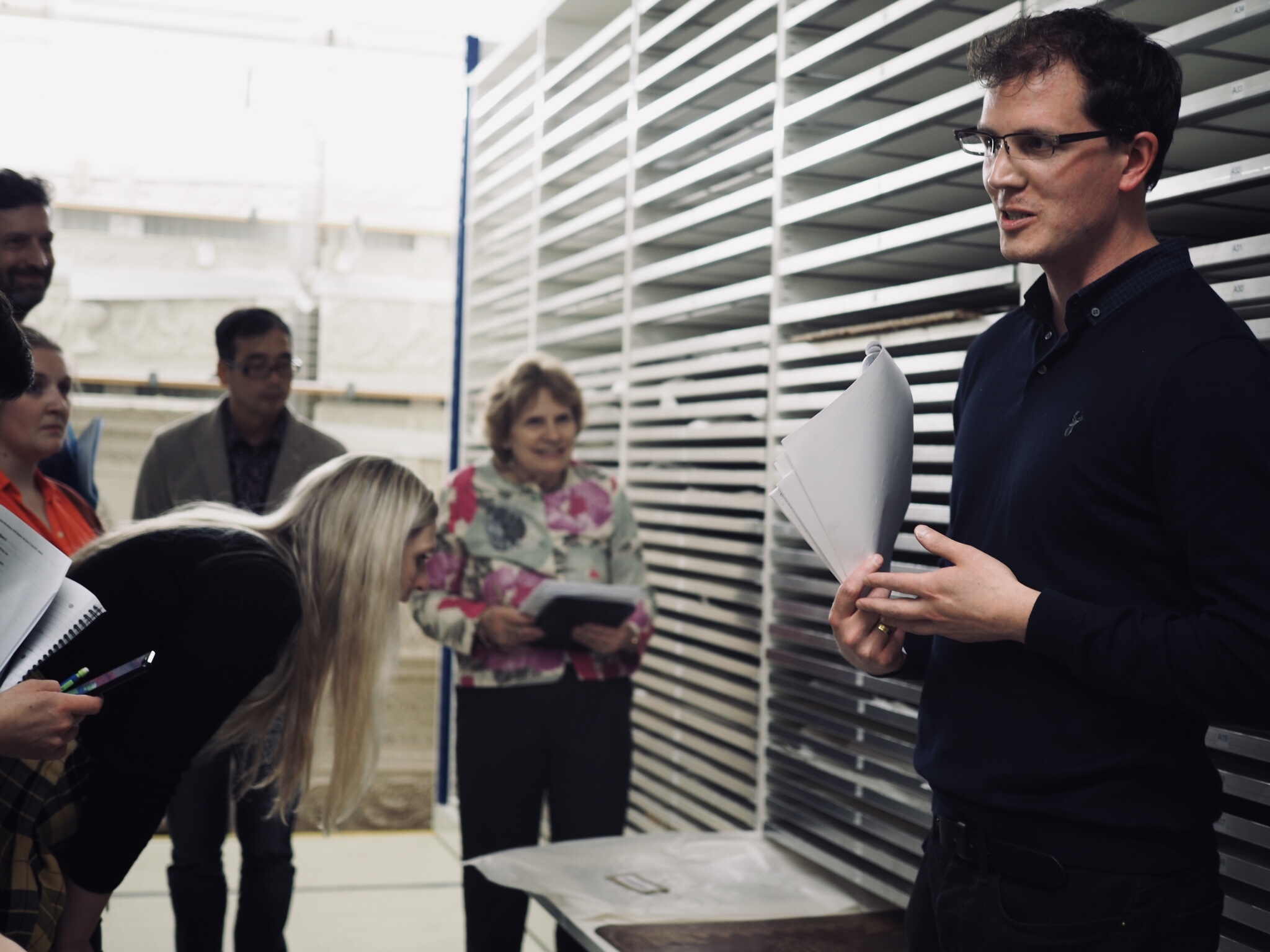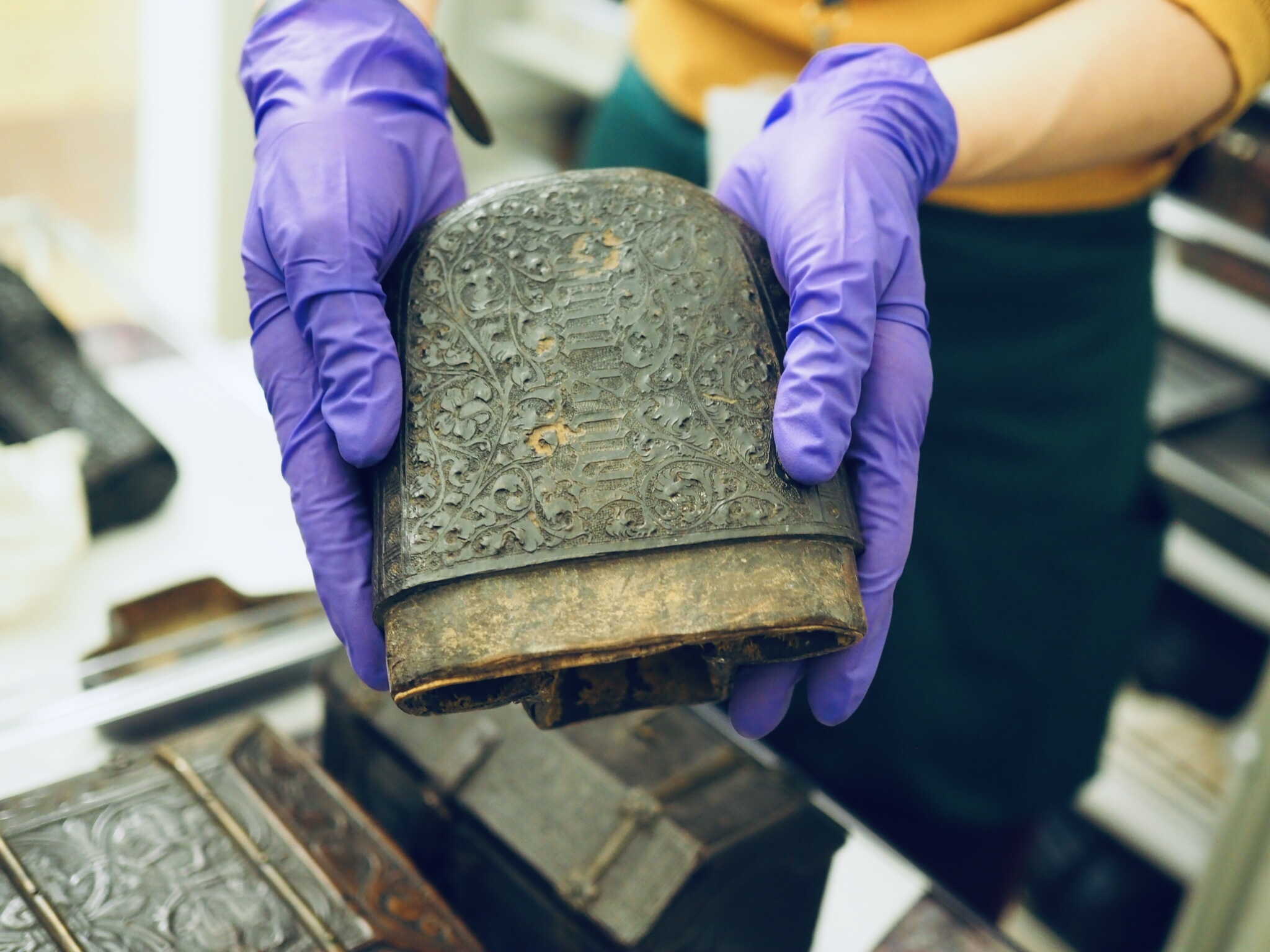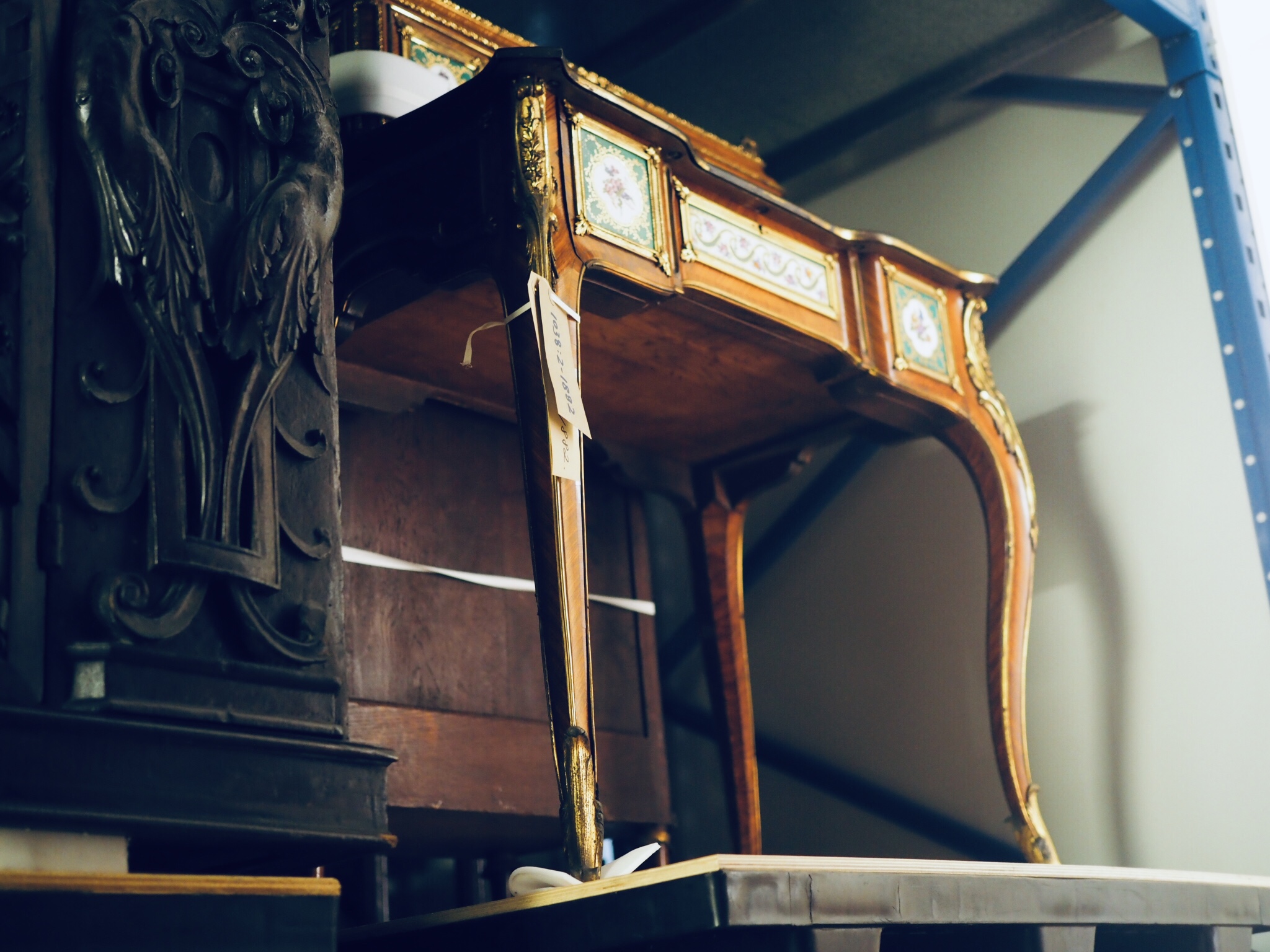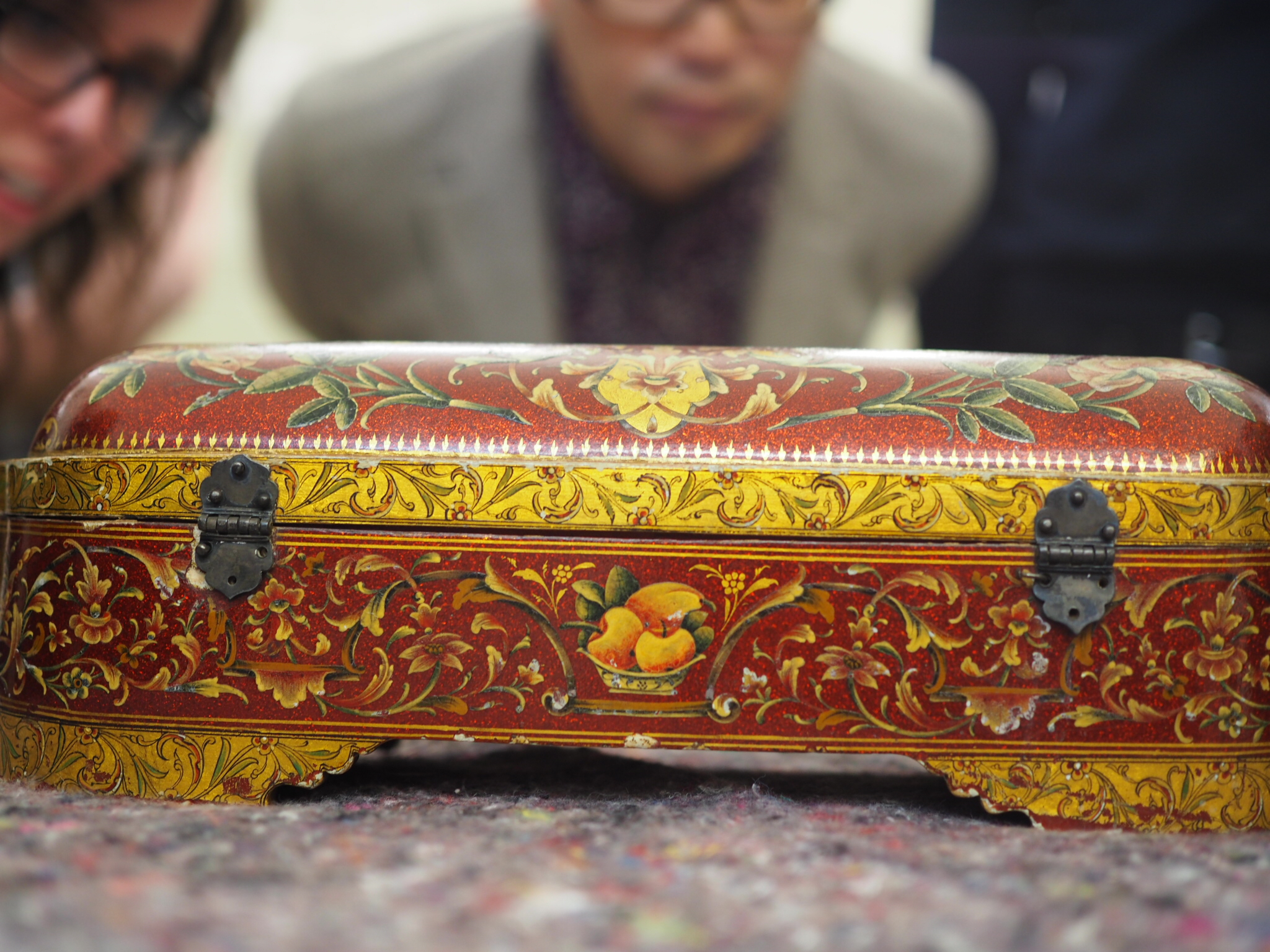Global Microhistory Salon 3: Entering the V&A Stores
Published: 10 June 2019 - Guido van Meersbergen
On Friday 7 June 2019 the last of three V&A Salons took place as part of the AHRC-funded Global Microhistory network, with the theme of 'Information, Writing, and Cultures of Correspondence'. Organised by Maxine Berg, this third salon session took place at the V&A stores at Blythe House, London, under the expert guidance of Avalon Fotheringham, curator of South Asian textiles at the V&A.
Entering the Museum Stores
After two successful salon events held in the V&A's Europe 1600-1815, Renaissance, and South Asia, and Islamic Middle East galleries, participants of the final Global Microhistory Salon had the rare opportunity to enter the V&A stores held at Blythe House, London, where 250,000 objects are stored for research and conservation purposes. Focused on the theme of 'Information, Writing, and Cultures of Correspondence', a global tour de force from west to east took us past objects produced in England, France, Italy, the Ottoman Empire, Persia, India, Central Asia, China, and Japan, and from the 8th to the 19th century. Some objects, such as the nineteenth-century Bonheur-du-jour or wooden writing desk fitted out with eighteenth-century porcelain plaques (1038-1882) could only be observed as stored above eye level in the multi-level storage spaces. Others, such as the late fifteenth-century Italian leather writing case (5425-1859) or the exquisite eighteenth-century Ottoman writing box (262-1869) could be seen opened and displayed up close. Following the tour of some of the stores, the participants had the pleasure of observing six more objects taken out of the store and displayed on a table in the Clothworkers' Centre Seminar Room, where they could be inspected at close range. Here, objects included a twelfth-century brass inkwell from Khorasan (Iran) displaying several human figures including a seated scribe (M.86-1969); a thirteenth/fourteenth-century jade water dropper in the shape of a lotus leaf made in China (1857-1888); and a nineteenth-century lacquer writing box decorated with mother-of-pearl produced in Japan for the European market (51:1 to 3-1852). One of the impressive highlights of the day was the incredibly-well preserved bundle of 8th-century textile and paper fragments found at Miran fort in north-western China, once a Silk Road outpost of the Tibetan Empire (LOAN:STEIN.493). Excavated by the archaeologist Marc Aurel Stein in 1907, some of the fragments in what is now known as the Stein Collection provide examples of early Tibetan writing.
Roundtable: Information, Writing, and Cultures of Correspondence
The session closed with a roundtable discussion about the way to situate these varying material manifestations of global writing cultures into emerging narratives of Global Microhistory. Participants raised questions regarding the representativeness (or lack thereof) of the people whose lives we study through a focus on written culture, or material artefacts that testify to cultures of writing. Citing a phrase recently introduced by Jan de Vries, Maxine Berg asked whether a focus on writing desks, inkwells and document cases was not just another manifestation of a scholarly tendency to study 'Uniquely Cosmopolitan Individuals'. This led to a lively discussion which highlighted the need to remind ourselves of the limitations and biases of one's source base, while at the same time recognising the fact that recent research has shone light on a great number of far-from-unique or exceptional individuals whose lives may be traced in the undelivered letters of the Prize Papers collection. Apart from mobile individuals, such people also included the stay-at-home contacts of persons on the move, as highlighted in the work of Gagan Sood and others. Another discussion topic focused on the extent to which the structurally-similar instruments and practices manifested in objects produced in societies so far removed in space and time should lead us to think in terms of pre-modern connectivity on a Eurasian scale. If the closing roundtable threw up more questions than answers, the lively exchange of thoughts generated by this object-focused encounter between academics and curators nonetheless testified to the success of the interdisciplinary format. An audio recording of the discussion, featuring participants from Warwick, Oxford, LSE, the V&A and UCL, can be accessed here.
Photo Slideshow
Photo credit: Adrianna Catena.

